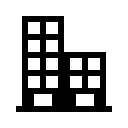* IF SOMEONE HAS A DOUBT IN STOICHOMETRY OR ANYTHING ELSE, FEEL FREE TO MSG ME*
*Tips continued :*
*CHEMISTRY* Chapter 1 :
Do all the definitons, on a paper make a chart and with arrows mark trends. Make a table which tells the factors, Highest , lowest. Write keypoints of give reason answers eg : Chlorine has more EA than Fluorine : F - small size - electro repulsion
Chapter 2 :
Do the definitons. Structure of all electrovalent and Covalent are similar, go through them once if you are confused, DON'T forget to write the electrovalency, do the lone pair effect and NH4+ and H3O+ coordinate bonds. Make a two column table and write the difference in properties of electrovalent and covalent compounds in KEYWORDS ( I am emphasising because long answers are boring to read , takes time but keywords can instantly make you remember the crux of the matter).
Chapter 3 :
Do all definitions . Make a table and write the general formulae of preparation of acids and base : such as H2 + halogen = acid; Metal + O2 = Base ;(there are more)
Go through the uses and the pH paper page. Learn the change in colours of indicators and the difference between them. Learn the SI Unit of pH and pH = -log H+
For salts learn solublity , just the general formula of all salt preparation ( w/ insoluble and soluble / dilute and conc and temp written) . With this you can make your own equations. Go through the examples once. Go through the preparation of specific salts with emphasis on FeCl3. Learn the properties, WOC , deliquiscence, efflorescence , Hygroscopy and Hydrolysis - learn the pH of solutions.
For Stoichometry - Learn the 2 laws , go through examples and understand what it means : Gay Lussac's is only for volume , Avogadro's can be of moles / mass / volume
Then solve last 10 years and behind book questions.
For Electrolysis : Learn all definitions and differences, see the examples : mainly electrovalent / polar covalent compounds are strong electrolytes other's are not. LEARN the names of NON electrolytes and WEAK. Don't get confused here. Understand that covalent compounds are molecules so they don't conduct electricity but in aq. state, they form ions by ionisation and conduct ; Learn that ionic compounds in solid state don't conduct and in molten/aq state - they form ions (So you can use this for any compound example they give). By heart the electrochemical series for both - cations and anions. Learn it like this : ( Note : 1st letter stand for element names)
Kings (K)
Cannot ( Ca)
Make (Mg)
A (Al)
Zebra (Zn)
I (Iron - Fe)
Like (Lead - Pb)
His ( H)
Car (Cu)
Horns (Hg)
So ( Silver - Ag)
Good ( Gold - Au)
Just learn the Selective discharge page.
Make a table with columns named : Cathode , Anode , Electrolyte , Anode Reaction and Product, Cathode reaction and Product , Give reasons , observations . Write for all 4 - Molten PbBr2 , CuSO4 ( inert and active electrode) and acidified water.
The electroplating and refining is pretty much logical if you understood electrolysis. Read through it once and you will surely get it.
For Metallurgy :
Read through the properties part. Write down the ores on a paper with chemical formulae. Write down the methods of concentration, their principle and ores used for them. Roasting and Calcination is pretty easy. Do reduction and learns reason why electrolysis / agent / heat is used.
For refining, learn the method names and read the explanation. Learn the metals and the places :
Distillation - Iron retort
Liquation - Hearth
Oxidation - Bessemer converter
Electrolytic - Voltameter
Just read the metallurgy of Zn and Fe. Baeyer's process is pretty important. On a page write down the equations, reasons, electrolyte, cathode , anode , products and reasons - write keywords only to save time.
Just read through the properties and for uses - write them down with reasons for use. Make a table for Al, Zn and Fe and do this. Go through hardening, annealing and rusting. Make a table and write down the constituents of alloys ( don't do %) , properties and uses. Solve last 10 years definitely for this chap.
For analytical : Learn the colours of ions - these help a lot as sulphates / chlorides / nitrates are based on these colours. Each ppt (Hydroxide) has its own adjective.
Fe(OH)2 is dirty green
Fe(OH)3 is reddish - brown
Cu(OH)2 is pale blue
Zn(OH)2 is gelatinous white
Mg(OH)2 is dull white ( NOT IN SYLLABUS)
Pb(OH)2 is chalky white.
Learn the excess equations and colours of excess solution.
Remember - Pb / Zn react with excess NaOH
Zn/Cu react with excess NH4OH - hence we can diff b/w them using Cu or Pb
The alkali + metal / metal oxide => learn general equations , you can balance on your own. But REMEMBER : with Al , water is present in equation ,ie. 2Al + 2NaOH + 2H2O -> 2NaAlO2 + 3H2
For practical chemistry :
Make a chart and label all gases in the 1st column. Write 2 tests for each and read through the remaining tests. Remember that H2S gives yellow paritcles of sulphur but SO2 doesnt ( with KMnO4/K2Cr2O7)
I will post the rest tomorrow morning. |
 |


